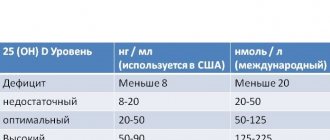Table of lymphocyte norms in men by age, what increased values mean
It is very difficult to overestimate the role of lymphocytes in making a diagnosis and protecting a person.
This is one of the first indicators that responds to infectious infection, the development of a malignant neoplasm, allergies or the negative effects of medications. Also, lymphocytes (normal in men and women) depend on the age of the patient. Before you figure out what is the danger of lymphocytes deviating from the norm, you need to understand: what kind of cells are they and what functions do they perform?
Lymphocytes and their functions
Lymphocytes are one of the types of white blood cells (leukocytes). A common feature for all leukocytes: the presence of a formed nucleus and the absence of the cell’s own color. Depending on the morphology, it is customary to distinguish between large granular cells and small cells without granules. Each type of lymphocyte performs its own function, however, the general functionality is reduced to protecting the human body from infections and its own mutant cells.
According to the functional classification, lymphocytes are divided into three groups, which are presented in the table.
| Type | Functions | Place of synthesis |
| B cells | Production of protein antibodies that are strictly specific to foreign antigens | During fetal development - bone marrow and liver, after birth - bone marrow |
| T cells | T helper cells are involved in the activation of other immune cells; stimulate the production of antibodies | Thymus |
| T-suppressors determine the duration of the immune response and its severity | ||
| Natural killers | Destroy infected and cancer cells | Formed from lymphoblasts - cells that have not yet come into contact with foreign antigens |
The number of lymphocytes is determined as part of a general blood test (sodium lauryl sulfate method) or leukocyte formula (flow cytometry). The period for obtaining analysis results does not exceed 1 day.
What are lymphocytes?
Lymphocytes in the blood are a type of leukocyte and, together with monocytes, form a group of agranulocytes, i.e. cells that do not have granules. Lymphocytes are the leading component of the immune system. Knowing what lymphocytes are in a blood test, doctors determine the patient’s immune status and receive information about the presence of infection and other diseases in the body.
Blood cells are produced in lymphoid organs. Here they differentiate and function. Production takes place in:
- bone marrow and fetal liver;
- central organs (for example, thymus);
- peripheral organs (spleen, lymph nodes, tonsils, blood, appendix).
After moving to the peripheral organs, they begin to constantly circulate between them and the blood. Most blood cells live for several years, but there are some that live on average about 3 days. Depending on the place of differentiation, types B and T are distinguished.
B lymphocytes are cells that, when encountering foreign elements, encode information about it, and then contribute to the destruction of the pathogenic microorganism. When the body subsequently encounters an infection, they launch defense mechanisms to neutralize the foreign body.
T-lymphocytes are representatives of cellular immunity, their number is about 80% of all types. They got their name from the thymus gland, in Latin. thymus. Here they acquire receptors for various antigens, after which they enter the blood and move to the primary lymphoid organs.
Killer cells have cytotoxic activity and are able to neutralize cells foreign to the body. With increased activity of these cells, transplants are rejected, the body's own cells that have undergone pathological changes (for example, tumor cells affected by viruses), as well as fungi and bacteria, are destroyed.
There are other varieties: helper cells enhance the activity of killer cells and facilitate the course of humoral immunity. T-suppressors tend to inhibit the activity of the immune system, while T-countersuppressors, on the contrary, stimulate the immune response. About 10% are cells with a memory effect, which store information about previous contacts with the antigen.
T-lymphocytes constantly circulate in the body and carry out cell differentiation, but if they fail and are incorrectly identified, they contribute to the development of autoimmune pathologies.
B lymphocytes have immunoglobulins on their membrane that act as receptors. This type resides in the human body mainly in the spleen, lymph nodes and Peyer's patches. Here, cells are transformed quantitatively and qualitatively, acquiring the ability to produce antibodies themselves.
NK group is responsible for recognizing malignant cells and destroying them. They are capable of disrupting the integrity of a foreign organism because they produce special proteins – perforins. The function of perforins is to pierce the membrane of a pathogenic organism.
Indications for analysis
A man can receive a referral for testing from a general practitioner, infectious disease specialist, urologist, surgeon or hematologist. Determining the level of lymphocytes in the blood is relevant if necessary:
- general clinical routine examination;
- preparation for surgical intervention of any degree of complexity;
- symptoms of infectious or parasitic infection (fever, cough, nausea, weakness, pain of various localizations);
- primary diagnosis of an allergic reaction and determining the degree of its severity;
- identifying leukemia and assessing the effectiveness of selected treatment methods;
- suspected cancer;
- suspicion of various immunodeficiencies;
- diagnosing side effects of medications during long-term use.
The norm of lymphocytes in the blood of men
Important: decoding lymphocytes in the analysis is the task of the attending physician, while normal values are selected taking into account the gender and age of the subject.
Self-diagnosis is dangerous due to incorrect definition of the disease and the necessary treatment methods, which can subsequently lead to a significant deterioration in the man’s health.
The standard norms of lymphocytes in men by age, given in the table, are for informational purposes only and cannot serve as a basis for self-diagnosis of the patient.
| Age | The norm of lymphocytes in men as a percentage of the total number of leukocytes |
| 0 – 1 year | 40 – 75 |
| 1 – 2 years | 35 – 65 |
| 2-4 years | 35 – 60 |
| 4 – 6 years | 30 – 55 |
| 6 – 8 years | 30 – 50 |
| 8 – 10 years | 25 – 45 |
| 10 – 15 years | 25 – 40 |
| 15 – 50 years | 17 – 35 |
| Over 55 years old | 15 – 30 |
It should be noted that standard values for infants are significantly higher than for older children. An increase in the number of lymphocytes is necessary to provide natural immunity to the child until the acquired one is fully formed.
Starting from the age of 55, men may experience slight lymphopenia - a decrease in the content of white blood cells in the blood, which is a variant of the physiological norm.
Norms of different types of leukocytes
Along with lymphocytes, patients are often interested in the question: what is the normal range of basophils and eosinophils, as well as other types of leukocytes?
The number of basophils in people should not exceed 1.5% of the total number of white blood cells; the value of the indicator does not depend on gender or age.
The eosinophil content up to 1 year is 1–5%, from 2 to 4 years – no more than 6%, and then the criterion should be in the range from 1 to 5% of the total leukocyte concentration.
Elevated lymphocytes in the blood of men - what does this mean?
It should be noted that a slight deviation of the criterion from normal values has no diagnostic value and can be caused by a number of reasons:
- improper preparation for the delivery of biomaterial;
- daily fluctuations of all laboratory criteria in the human body;
- errors at the preanalytical stage;
- errors of the instruments used.
In this case, an increase in lymphocytes in the blood of men is a variant of the physiological norm and has no diagnostic value. A repeat study is scheduled after 1–3 days.
If the number of lymphocytes exceeds the standard values by 10 or more units, then a comprehensive plan for examining the patient is determined to determine the presence of various pathologies. Possible causes of increased levels of lymphocytes in the blood in men:
- infectious disease of a viral, bacterial or parasitic nature;
- non-infectious inflammatory process;
- oncological pathologies affecting the functioning of the bone marrow, lymphatic and circulatory systems;
- acute stage of the allergic response of the human body;
- intoxication with carbon disulfide, arsenic, mercury or other substances, including psychotropic and narcotic substances;
- long-term use of medications related to anticonvulsants or antiepileptics.
What are lymphocytes responsible for in the human body?
To understand what lymphocytes in the blood are responsible for, it is necessary to consider the functions of these blood cells. Blood cells signal the state of the immune system and are primarily responsible for fighting foreign elements that have entered the body. You can also read what eosinophils and segmented neutrophils are on the website.
At the same time, protective cells fight equally well against viruses and bacteria, fungi and other organisms. Foreign cells include malignant and aged cells that do not fulfill their purpose in the body. The work of blood cells in the body has clearly defined stages, for which various types of lymphocytes are responsible:
- providing cellular immunity;
- regulation of hematopoiesis;
- release of cytokines;
- regulation of humoral immunity.
Decreased lymphocytes
Patients ask themselves: what is the danger of a low lymphocyte count? The danger of this condition is due to the inhibition of the natural defenses of the human body. It can be a consequence of autoimmune pathologies, infection with the human immunodeficiency virus (HIV) or malignant lesions of the circulatory system.
It is important to note that during the acute stage of a bacterial or viral infection, the size of lymphocytes often decreases. The reason is the rapid death of protective cells when fighting infection, while new lymphocytes do not have time to be produced in sufficient quantities. In this case, in addition to antiviral drugs, the doctor prescribes immunostimulating drugs.
How to prepare for the analysis?
The accuracy and reliability of the results obtained depends on the correct preanalytical preparation of the patient. The biomaterial for analysis is venous blood serum taken from a vein in the bend of the elbow. It is important to donate blood while sitting.
The biomaterial is collected strictly on an empty stomach (at least 8 hours break after the last meal), the optimal time is from 8 to 11 am. It is recommended to give up fatty, fried and spicy foods for 1 day; alcohol is prohibited. You are allowed to drink unlimited amounts of unsweetened water.
Physical and emotional stress should be limited as this may affect lymphocyte concentrations and lead to false test results. If you plan to go to the laboratory in the morning, it is not recommended to attend sports training the night before. Smoking is prohibited half an hour before blood collection.
For 2 days, the intake of any medications is limited, by prior agreement with the attending physician. This rule is especially important for drugs that thin the blood, for example, aspirin, phenylin, aspecard. The impossibility of discontinuing vital medications determines the need to notify the laboratory employee.
How to get tested
In order for the results of the blood test to be as accurate and reliable as possible, you should properly prepare for the donation of biomaterial:
- Within 3 days before the planned study, avoid alcoholic and low-alcohol drinks, high-calorie, fried, spicy, smoked and fatty foods. Do not overeat, give preference to light foods, diversify your diet with protein foods, fruits and vegetables. It is useful to drink water without gas, sugar and sweeteners, flavoring and aromatic additives. The volume of liquid you drink daily should be at least 1.5-2 liters.
- The night before, do not go to the bathhouse or solarium, gym, fitness center or other sporting events that require physical activity. Avoid hypothermia, overheating, emotional stress, stress, anxiety and worry.
- On the day of blood sampling, do not have breakfast (take the test on an empty stomach) and do not smoke.
- If a man is taking any medications or dietary supplements, he must stop taking them 2 days before the test. In cases where discontinuation of the drug is impossible for health reasons, you should notify your doctor or laboratory assistant, since long-term use of medications and dietary supplements may distort the results. This is especially important for patients taking medications to thin the blood (Aspirin, Cardiomagnyl, Aspecard, Magnicor, Phenilin, Trental, etc.).
Important information: What are T lymphocytes (types and functions)
The test to determine the level of leukocytes in the blood must be taken in a sitting position. Before entering an office or laboratory, it is useful to sit in the hallway for 15-20 minutes to restore physical and emotional balance.
Summary
Summarizing the above, it is necessary to emphasize:
- determining the size of all types of leukocytes is the first stage of diagnosing most pathologies;
- normal lymphocyte values should be selected taking into account the patient’s age;
- deviations of 10 units or more have diagnostic significance;
- an increase in immune cells can be a result of a number of pathologies with different etiologies (bacterial, viral, parasitic, autoimmune, cancer, allergic), which makes it impossible to use one laboratory indicator in isolation to make a final diagnosis;
- To find out the exact reason for the deviation of the indicator from the norm, a specialist determines a set of laboratory and instrumental research methods.
Certified specialist, in 2014 she graduated with honors from the Orenburg State University with a degree in microbiologist. Graduate of the graduate school of the Federal State Budgetary Educational Institution of Higher Education Orenburg State Agrarian University.
The role of lymphocytes and the norm for men
The norm of lymphocytes in the blood for men is 1.2-3.0 thousand/ml, which is approximately 25-40%.
Lymphocytes are a type of white blood cell. They are responsible for humoral immunity, that is, the production of special antibodies of the immune system. The main feature of these cells is that they provide long-term immunity to various diseases due to their participation in the production of antibodies.
The “lifespan” of lymphocytes is very long – up to several years. Thus, they do not die while performing their functions, but are able to act for a long time, providing strong immune defense for the body.
The norm for lymphocytes in the blood of men is considered to be 25-40% of these cells from the total number of leukocytes. If the number of lymphocytes is normal in a man, it means that his immunity is able to resist various infections.
With elevated lymphocytes in the blood of a man, there is no improvement in immune defense, despite the specific function of these cells.
The number of lymphocytes and their norm in men depend on age. Thus, in childhood their number is significantly higher than in an adult, but in old age the number of lymphocytes decreases. At the same time, changes in the number of lymphocytes in the male body throughout life are a normal process.
The norm of lymphocytes in men by age is shown in the table. These are average values, since a deviation in the number of lymphocytes by several percent up or down does not always indicate pathology and may well be an individual characteristic of the body. So, if a person’s lymphocyte level is slightly decreased or increased from birth, such a slight deviation from the norm persists throughout life, but is not a symptom of the disease.
| Norm of lymphocytes by age | |
| Age | Number of immune cells, % |
| From birth to 12 months | 45-70 |
| 12-24 months | 35-60 |
| 2-5 years | 30-60 |
| 6-9 years | 26-55 |
| 11-15 years | 24-46 |
| 16-55 years old | 20-35 |
| Over 60 years old | 14-30 |
As you can see, in newborn children the number of these cells is very large. This is necessary for the formation of temporary and permanent immunity in children. As the child's immune system strengthens, the number of lymphocytes decreases. From adolescence to 50-60 years, the number of lymphocytes does not change. In older people, the aging process of the body begins, so the composition of the blood changes and there are fewer lymphocytes.
The number of lymphocytes can be determined by a general blood test. In this case, the number of immune cells as a result of the analysis is determined as a percentage based on the total number of leukocytes.
During menstruation, lymphocytes are increased
So, we all know that our health needs to be protected. We sometimes get sick and, almost constantly, we use folk remedies or other medicines that ease our pain and heal. But we never thought that our main panacea is the immune system.
Immunity is a human barrier that does not allow foreign bacteria to enter the territory of our body. But if it so happens that the disease has penetrated inside us, then the immune system is actively trying to overcome the causes of the infection.
The most important representatives of our immune system are Lymphocytes - these are cells that contribute to the production of antibodies and also control cellular machinery. An excess of such seemingly “useful” cells is a very sad sign that can lead to bad consequences.
What are elevated lymphocytes in the blood?
Lymphocytosis is a significant increase in lymphocytes in the blood. It is divided into two subgroups: relative and absolute. Relative - a condition in which the amount of such substances in a person’s blood exceeds the norm (due to age).
In adults over 30 years of age, this condition is noted when decoding the level of white cells, the result should be a number higher than 4 * 109 cells / liter of blood (look at the number of zosinophils per liter of blood).
Absolute lymphocytosis is basically the percentage of their number per liter of blood. This number also includes hemoglobin, zosinophils, monocytes, basophils and neutrophils.
The percentage can be lower or higher, but the norm is considered to be 19 - 20%. In any case, when collecting tests, the doctor first looks at the number of lymphocytes in the blood.
Increased lymphocytes in the blood, what does this mean in an adult?
The main “vehicle” for “defenders” is blood. The final point of arrival is the lymph nodes, spleen, and bronchial vessels. When any harmful virus or infection enters, the body’s barrier response begins. Antibodies begin to be released to fight the “enemies.” Sometimes a lot of them are created.
For example, ESR - red blood cells , with a huge number of foreign organisms, can stick together, which indicates an increase in substances in the blood.
White blood cells - their significant increase - indicates a bacterial infection, as well as a viral infection, which creates a significant blow to the human body. Together, many antibodies form a huge accumulation of substances in the blood, which indicates Lymphocytosis. Therefore, if you detect an increased result of cells of this disease, it is better to consult a doctor.
Increased lymphocytes in the blood in women causes
What can we say about adult girls? It is normal for them to increase the level of indicators due to their physiological properties. With the intensification of the creation of little bodies, a completely normal reaction of the body manifests itself, due to bacteria and viruses that have penetrated into it.
As soon as a woman becomes infected with some disease, for example, tuberculosis or the same chickenpox, the level of white cells jumps significantly. This indicates the sensitivity of the immune system in the female half of the population.
Sometimes it will be enough to just take pills or other medications. But this does not mean that girls can breathe easy.
Like men, women must monitor the indicators more carefully, because a very frequent increase in the percentage of lymphocytes indicates an immune imbalance, which can affect the functioning of the kidneys and reproductive system.
The main causes of elevated lymphocytes in the blood in women:
- infectious diseases
- lymphocytic leukemia
- endocrine system diseases
- recovery period after measles, mumps, tuberculosis
- bronchial asthma
Causes of elevated lymphocytes in men
Because, we said that both young and adult women are very sensitive to various infections. It has already happened that their body is built according to a different system. Let's talk about grown men.
One of the main reasons, as we found out, is infection . Stress, fatigue, poor nutrition containing many calories: fast food, smoked foods, and so on - all this is the cause of “magnetism” for a new infection. Since old enough men by nature get sick more often, infectious parasites dig deeper into their system.
We all know about the stereotype: “A man’s death occurs at a body temperature of 37.0.”
It is also worth noting that the level of red blood cells in adult men is lower, and the heart pumps blood more slowly than in women, so to fill this gap, the body secretes a huge amount of antibodies containing useful substances.
But adult men over 45 years old should be wary of this, because the reason for the increase in lymphocytes indicates a malfunction of the heart or lymphatic system of an adult body, which leads to a heart attack or attack.
Causes of lymphocytosis in men:
- period of infectious diseases: asthma, tuberculosis, malaria, mumps, chickenpox
- lymphocytic leukemia
- bronchial asthma
- acromegaly, ovarian hypofunction, thyrotoxicosis, myxedema
Why does the level of lymphocytes in the blood increase during pregnancy?
Women during pregnancy are very susceptible to the external bacterial and infectious environment, due to the fact that a restructuring of the immune system occurs in her body. Now the “protection” extends to the fetus to protect against various pathologies. Therefore, it is quite obvious that a pregnant woman perceives all external threats very harshly.
The number of red blood cells and leukocytes in the body increases significantly for more reliable protection of organs and the fetus. Timely and adequate treatment of the underlying disease of the expectant mother makes it possible to successfully cope with the imbalance.
But, the lack of preventive treatment can only worsen the health of any person, and this can affect the health and condition of the unborn child.
Negative effects on the baby and continuation of pregnancy can occur due to neglect, previously unprevented illness.
Increased lymphocytes in the blood of a child: causes
In a child who was recently born, the level of lymphocytes in the blood is not very high, due to the fact that the child’s immune system does not function at full capacity. But, some time after birth, the number of lymphocytes begins to increase significantly and, until the age of four, the indicator of a particular type of lymphocyte exceeds the number of other groups of leukocytes.
Causes of elevated lymphocytes in the blood in children
To put it simply, an increase or decrease in the level of antibodies in any person is a sign of illness, and we already know that a change in the number of white blood cells is necessary to fight infection or other negative effects on a still small organism.
However, a sufficiently high percentage of antibodies in a child does not always mean that the cause is a viral disease, a tumor process, or another bacterial disease.
With relative lymphocytosis, the reason for this blood test result may be other factors that reduce the level of the number of completely different types of leukocytes, for example, neutropenia.
In this disease, due to the lack of vitamin B12 in the blood or the use of incorrect medications that suppress the work of the body's defenders - neutrophils.
Causes of elevated lymphocytes in the blood of a child:
- hiv
- chickenpox
- herpes
- measles
- whooping cough
- bacteriological infection
- tuberculosis
- parasitic infestations
The reason for the increase in lymphocytes in the blood of a teenager
The normal level of lymphocytes in a person's blood may vary depending on age. That is why laboratories use different standard norms for children under one year old and ending with teenagers and adults.
The indicators of white cells in adolescents and the older generation also have their own differences. If you take a child 12-16 years old, then at this age the child very often suffers from ARVI or FLU.
These are all combined infections, and, as we understand, during adolescence a person and his immune system undergo structural changes, and sometimes it is difficult for the body to cope alone with such a huge content of harmful bacteria.
The most important thing here is not to poison the child with antibiotics, do tests, and start treatment on time, due to the future normalization of the percentage of the level of lymphatic bodies in the blood.
Why does the level of lymphocytes in the blood increase in an infant?
Many infants sometimes experience neutropenia or physiological lymphocytosis. In a child, this imbalance is more noticeable in percentage terms than in others.
The norm is 50-80, so if it is slightly exceeded, it is not at all critical. This condition is relevant not only in adults, but also in many children. Therefore, sometimes your expectations can scare you. The best way to check the status of the level of leukocytes, platelets and lymphocytes is to take blood tests.
There is also a possibility that increased levels of these substances in humans are associated with hereditary diseases acquired in the womb, or with improper formation of the body or lymphatic system at birth.
Decreased lymphocyte count
Tuberculosis leads to a decrease in lymphocytes in the blood
A reduced level of lymphocytes in the blood is called lymphopenia. There are two forms of pathology - absolute and relative. In the first case, the low level of lymphocytes is due to the fact that the bone marrow initially produces a small number of these cells. This disorder is observed in severe pathologies such as leukemia.
Relative lymphopenia is a decrease in the percentage level of lymphocytes due to an increase in the number of neutrophils in the blood. This type of disorder occurs most often and is a consequence of infectious and inflammatory processes occurring in the body.
Causes of lymphopenia
There are infectious and non-infectious causes of a decrease in the number of lymphocytes in the blood. Infectious causes include the following diseases:
- typhus;
- tuberculosis;
- staphylococcal and streptococcal infections;
- HIV infection.
Non-infectious causes include liver pathologies, long-term use of immunosuppressants, and malignant neoplasms. Lymphopenia is also observed in inflammatory diseases such as appendicitis and cholecystitis. The causes of this disorder also include rheumatoid arthritis and sarcoidosis. Long-term fasting and a strict mono-diet can cause a decrease in the number of lymphocytes in the blood.
What does a deviation from the norm tell you about?
Changes in the number of lymphocytes may indicate the body's response to some changes in the environment or its own body. Most often, deviations are observed in various diseases, but a slight increase or decrease in the level may be normal under some conditions.
Promotion
Lymphocytosis is less dangerous than a decrease in the amount of these blood elements. Physiological increase can be observed in the following conditions:
- after intense tanning in the salon or on the beach;
- after drinking a significant amount of alcohol and fatty foods, which most often happens after all kinds of feasts;
- after intense sports training;
- during stressful situations and psycho-emotional stress;
- during the period of gestation, the normal limits are also higher than usual (the detection of a large number of lymphocytes in the peripheral blood of pregnant women is due to a general decrease in immunity, which is required for the normal development of the baby, which is half foreign to the woman’s genetic material);
- Heavy smokers also exhibit lymphocytosis, which is associated with an increased reaction of the body to tars and other harmful substances regularly entering the lungs;
- lymphocytes before menstruation, during and immediately after menstruation may also be slightly increased, which is due to changes in the uterine cavity.
But if significant lymphocytosis is detected, various diseases should first be excluded, and only after a complete clinical and laboratory examination can we talk about a physiological increase.
Infectious pathology
If neutrophils (a group of leukocytes) are responsible for the entry of pathogenic bacteria into the body, then lymphocytes take full responsibility for viral invasion. They destroy “strangers” and form a “memory” for many years in relation to them. Therefore, their absolute increase is an undoubted sign of the presence of some kind of viral infection. Most often we encounter the following diseases with characteristic lymphocytosis:
- mononucleosis,
- rubella,
- chickenpox,
- measles,
- whooping cough,
- parotitis,
- adenovirus,
- ARVI and influenza.
Vaccinations are carried out against most of these pathologies in childhood, so the risk group is those who, for some reason, did not undergo these procedures at a young age.
Lymphocytosis is also observed in syphilis, tuberculosis, malaria, diphtheria, typhoid fever and some other pathologies.
Noting an increase in these blood elements, we first have to exclude various acute respiratory infections and influenza.
Malignant tumors
Chronic lymphocytosis and various hyperplastic processes of lymphoid tissue lead to lymphocytosis in girls after 14-16 years of age. For some time, these diseases can be virtually asymptomatic.
Chronic lymphocytic leukemia is characterized by the fact that lymphocytes are formed and go through all their stages of differentiation, but for some reason cannot perform their functions. As a result, the body tries to compensate for the immune defect by constantly increasing their number, but, as a rule, to no avail.
Chronic lymphocytic leukemia is characterized by an enlargement of many groups of lymph nodes, the appearance of unmotivated weakness, lethargy, and increased fatigue. Due to the inferiority of the immune system, various viral diseases constantly arise, often with a severe course. Blood clotting may be impaired, the liver and spleen may become enlarged.
The clinical picture of hyperplastic processes in lymphoid tissue is similar, but these diseases are more difficult to diagnose, and they are much less common.
Autoimmune pathology
In case of certain failures, lymphocytes perceive their own tissues as dangerous. As a result, organs begin to be destroyed by their own cells. Accordingly, the number of lymphocytes responsible for this process increases in the blood.
Most often, autoimmune thyroiditis develops - a pathology of the thyroid gland. In addition to changes in hormones and a specific ultrasound picture, blood lymphocytosis is observed. Also, similar changes can be noticed in rheumatoid arthritis, Crohn's disease and other pathologies. The lymphocyte count during menstruation, after or on the eve of menstruation will not differ, always being above the norm for these diseases.
Drug poisoning
When ingested, certain heavy metals and drugs can cause a decrease in the number of neutrophils. As a result, relative lymphocytosis is formed with normal absolute values.
After removal of the spleen
The spleen is not only involved in the formation of lymphocytes, but it is also the place where their destruction occurs. When an organ is removed for some reason (after injury or as a result of illness), blood cells have to look for another place. As a result, most lymphocytes circulate in the blood longer than usual, as would happen during the normal process of their formation. And an increased number of them is formed. Over time, compensatory changes occur, and lymphocytes return to normal.
Decline
If the number of these blood cells is determined below 1.0 * 109 / l, this condition is always very alarming and in 99% of cases hides a serious pathological condition.
Infectious pathology
If the inflammatory process continues in the body for a long time and does not respond well to drug therapy, at a certain point the protective forces are depleted and the number of blood lymphocytes decreases. In the absence of proper treatment, sepsis can develop with a severe, sometimes fatal, outcome.
Bone marrow pathology
The bone marrow is the site of formation of lymphocytes and other blood cells. With a pathological effect on it, this process can be disrupted, resulting in a decrease in the number of blood cells.
Similar conditions can occur against the background of radiation exposure, with long-term use of certain medications, for example, cytostatics.
Oncological diseases
Some malignant pathologies are also characterized by a decrease in the number of lymphocytes. For example, Hodgkin's lymphoma. In this case, against the background of an enlarged group of lymph nodes, weakness, lethargy, and fatigue appear. Anemia and other pathological conditions develop. For a long time, the disease may proceed unnoticed, but with a thorough examination it is always possible to identify abnormalities.
Immunodeficiency conditions
All immunodeficiencies, congenital or acquired, are characterized by lymphopenia. It is not always possible to detect pathology on time. The main symptom of immunodeficiency is persistent viral and bacterial infections.
For example, HIV falls into this group. With this disease, the work of the T-cell unit is disrupted. The higher the stage, the brighter the clinical manifestations. Ultimately, even bacteria that normally live in the human body begin to cause pathological processes.
Increased number of immune cells in the blood
Lymphocytosis can only be determined by taking a general blood test.
An increase in lymphocytes in the blood in men is called lymphocytosis. This disorder is a consequence of recent diseases, and may also indicate a low-grade inflammatory process in the body.
Reasons for violation
Only a doctor can accurately answer why the level of lymphocytes in a man’s blood is elevated. The causes of this disorder are various viral and bacterial infections. Among the viral causes of the disorder are:
- Infectious mononucleosis;
- viral hepatitis;
- whooping cough;
- infection with cytomegalovirus.
The bacterial causes of this pathology are zoonotic infections. This is a group of diseases transmitted through the bite of a dog, rat or cat scratch.
It is difficult to say why lymphocytes in the blood of men are elevated without a comprehensive examination. It is important to understand that in the vast majority of cases this is a temporary symptom that goes away after the underlying disease is cured. As a rule, an increase in the number of lymphocytes is observed in severe ARVI and influenza.
Specific symptoms
When lymphocytes in the blood increase, men experience frequent headaches
Lymphocytosis is not a disease and therefore has no clinical symptoms. At the same time, an increased level of lymphocytes in the blood accompanies infectious diseases, which are characterized by the following symptoms:
- headache;
- increased body temperature;
- swollen lymph nodes;
- chills and night sweats;
- general weakness;
- prostration.
An increase in the level of lymphocytes in the blood affects the functioning of the lymphatic system. This is manifested by enlarged lymph nodes. Quite often, superficially located nodes enlarge, which are easy to palpate independently - cervical, axillary, inguinal. Lymphocytosis can be suspected when tubercles appear in these areas.
How to treat lymphocytosis?
As in the case of lymphopenia, lymphocytosis is not treated, since, in fact, it is not a disease. Therapy should be aimed at eliminating the underlying disease. Since pathology often occurs against the background of viral infections, it is necessary to take measures to strengthen the immune system. As a rule, antiviral and restorative agents are prescribed.
It is important to understand that it is inappropriate to treat elevated lymphocytes in a man’s blood without knowing the cause of the disorder. In addition, the results of the blood test must be interpreted by a doctor. Self-medication based on test results can be dangerous, since it is difficult for an ordinary person to see a holistic picture of deviations from the norm in the composition of the blood.
source
Lymphocytes are increased during menstruation
Skip to content
General practitioner since 2006. Gastroenterologist.
Participant in conferences on general therapy, gastroenterology, pain therapy and restorative techniques, diet therapy. Participant of the XIX Annual educational course “Internal diseases: review and new achievements” (Columbia University Medical Center (New York, USA).
Area of professional interests: ARVI, acute viral and bacterial infections of the upper respiratory tract (including in pregnant women), gastrointestinal diseases, diet therapy, restorative medicine, rheumatological diseases.
Phone number for appointment (clinic “Natali-med” in Strogino).
Hehe) Come on (if you can, we are almost the same age) stop moping, do something useful. With your husband in a cafe, to the cinema, for a walk! And drive all bad thoughts away from you! Life goes on! You have everything it will be good! Well, as they say, thoughts tend to materialize, so think only about the good!
The girl is right, it is very difficult to diagnose these symptoms. He will go from doctor to doctor and there will be no change in his state of health. Each doctor will make his own diagnosis and prescribe treatment, but conventional medications do not help.
This is definitely a VIRAL disease of a systemic nature, with all the ensuing consequences. Try getting tested for mycoplasmosis, chlamydia, tocoplasmosis, Epstein-Barr virus, cytomegalovirus in the blood and PCR, get tested for your immune status - your immune status is clearly low.
There is no need to panic, but there is no need to calm down either! It won't go away on its own! Contact an immunologist. What will he say?
No, that’s a bummer. Increased lymphocytes indicate INFLAMMATION IN THE BODY. Infectious diseases, viral hepatitis, chronic tuberculosis, secondary syphilis, the recovery period after acute infections (post-infectious lymphocytosis);
hypersensitivity caused by drugs, bronchial asthma, ulcerative colitis, neurasthenia, What the **** is LYMPHOMA. Do you even know how it manifests itself?
Leukocytes speak about inflammation in the body, not lymphocytes.
And lymphocytes also speak of inflammation, but not in an acute form, but in a sluggish form.
And also, DEFINITELY > immunity is reduced, but this can manifest itself in anything: in inflammatory processes of the entire gastrointestinal tract, genitourinary tract, in the appearance of chronic fatigue, which, unfortunately, will increase, > severe pain in the joints will appear and muscles, etc. The very quality of life deteriorates. Is this not enough for you?
> How do you like ESR -13.14? Although these indicators are included in the ref. limits, not a single person with such ESR indicators will say that he feels well, because inflammation still occurs with such lymphocytosis
I'm a guy, 25 years old. Guys, can anyone tell me what elevated amylase means during tests? The norm is 0-100, I had 136, all other blood urine indicators are normal. Doctors said it was possible that there was a disease of the pancreas (pancreatitis or chronic
pancreatitis), while I have no pain in this area, the temperature is normal, only bloating occurs after eating and gas formation (for 2 - 3 months or more), they told me to drink Creon 10,000 a week during meals, reconsider the diet and again for testing for amylase and feces.
In general, I began to be afraid of something:(, although the doctors said that this often happens in youth, but there is a lot of terrible things written on the Internet about pancreatitis and, in general, about elevated amylase:(. Can someone explain what this could be?
Hello everyone, I want to share my trouble. My lymphocytes are also elevated - 66%, ESR - 5; leukocytes - 6.3; Red blood cells - 4.46; hemoglobin 114; segmented - 27; platelets - 290. The temperature has been 36-37.3 for the second month, the bristles are normal, FCS, FGS - everything is fine, what do you recommend, tell me. They give me a direction to Samara, ultrasound of all organs is also normal.
https://www.youtube.com/watch?v=23S96rk_gt0
We need to go to Samara! These lymphocytes are no joke! We need to look for the reason. You need money for an examination - don’t regret it, health is more valuable! If there was no sexual contact - EXCELLENT - the search circle narrows sharply.
You will need to consult a therapist, infectious disease specialist, hematologist, and possibly an immunologist. If there were contacts, then this is an open field - to the above-mentioned doctors, a venereologist, a virologist and many tests for sexually transmitted infections are added.
I wish you to find the cause and recovery!
I have the same situation. definitely inflammation, because I was recently diagnosed with acute inflammation of the right kidney) I didn’t write it scientifically, but the meaning is clear. so go to the doctor and get other tests.
Source: https://borodaprofi.ru/medicina/limfocity-povysheny-pri-mesjachnyh.html











